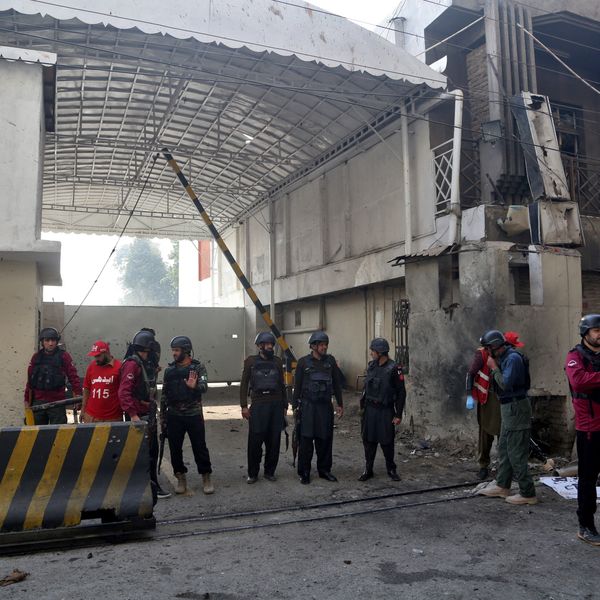Pakistan's October inflation hits 1-year high at 6.2%
Rising wheat and perishable food costs push inflation above expectations

Haris Zamir
Business Editor
Experience of almost 33 years where started the journey of financial journalism from Business Recorder in 1992. From 2006 onwards attached with Television Media worked at Sun Tv, Dawn Tv, Geo Tv and Dunya Tv. During the period also worked as a stringer for Bloomberg for seven years and Dow Jones for five years. Also wrote articles for several highly acclaimed periodicals like the Newsline, Pakistan Gulf Economist and Money Matters (The News publications)

A man shops for grocery items in Peshawar, Pakistan December 13, 2021
Reuters
Pakistan’s inflation rate rose to nearly 6.2% in October, surpassing market expectations of 5.5% to 5.8% and marking a one-year high, driven primarily by higher prices of perishable food items following recent floods.
According to data released by the Pakistan Bureau of Statistics, inflation in October stood at around 6.2%, compared with 7.2% in the same month last year.
During the first four months of fiscal year 2026, ending Oct. 31, the average inflation rate reached 4.72%, down sharply from 8.71% during the same period last year.
The food index jumped 2.7% month over month, mainly due to a stronger-than-expected rise in wheat and perishable food prices, analysts said. Electricity prices climbed 8.8% month over month, exceeding expectations, while the “personal effects” index—reflecting gold prices—rose 10%. Core inflation also accelerated, reaching 7.9% year over year compared with 7.3% previously.
Inflation recorded an increase primarily driven by rises in categories such as food (+5.6%), housing (+4.2%), clothing and footwear (+8.1%), health (+9.7%), education (+10.6%), restaurants and hotels (+6.1%), transport (+6.7%), and miscellaneous goods and services (+18.2%). However, this upward pressure was partially offset by a year-on-year decline in recreation and culture (-3.7%).
On a MoM basis, inflation rose by 1.8%, mainly driven by a 2.7% increase in the food index. The uptick reflects higher prices of tomatoes, onions, fresh vegetables, wheat products, and eggs.
The housing index rose by 2.2% MoM, primarily driven by an increase in the electricity charges with the positive FCA PKR 0.08 KWh. Moreover, the transport index also saw a 0.9% increase, mainly due to a rise in petroleum product prices.
Core inflation stood at 7.9% YoY in Oct’25, with the 4MFY26 average at 7.4%. Urban core inflation dropped to 7.5% YoY in Oct’25, lower than 8.6% in Oct’24, while rural core inflation declined to 8.4% YoY from 11.7% a year earlier. On a MoM basis, core inflation increased by 1.1% in urban areas and 1.3% in rural regions.
Inflation projection
The World Bank has warned that flood-related shocks to food supply could push inflation higher than earlier projections, peaking at 7.2% in FY26 before easing to 6.8% in FY27 as food supply constraints resolve, global commodity and energy prices decline, and the exchange rate remains market-determined.
The floods are expected to disproportionately impact poor and vulnerable rural households that have lost agricultural assets and have limited savings or coping mechanisms. These pressures are compounded by rising food inflation and the instability of informal, low-skill employment in industry and services sectors.
Despite the recent uptick, headline inflation had dropped sharply to 4.5% year over year in FY25 from 23.4% in FY24—its lowest level since FY18. The decline was attributed to lower electricity tariffs, adequate food supplies, favorable base effects, easing global commodity prices, and a market-determined exchange rate.
On the demand side, fiscal consolidation helped contain domestic demand pressures, reinforcing the disinflationary trend through FY25.










Comments
See what people are discussing